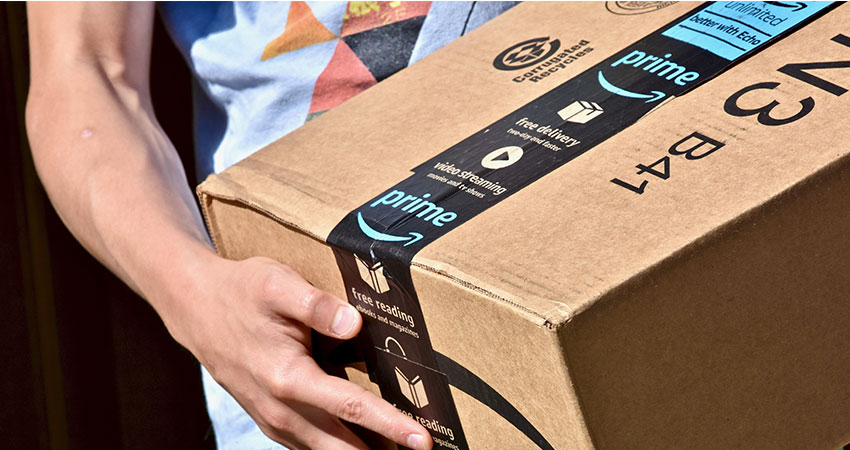Amazon has increased the price of its Prime subscription program in the U.S. for the first time in four years, going up 17% from $119 to $139 per year, as the company faces the reality of massive logistics costs and a flattening of its ecommerce sales vs. the hypergrowth of the early pandemic period.
For new Prime members, the price change goes into effect on Feb. 18, while current Prime members will see the increase after March 25, kicking in on their next renewal date. Monthly subscribers will see their price increase from $12.99 to $14.99.
“As expected over the holidays, we saw higher costs driven by labor supply shortages and inflationary pressures, and these issues persisted into the first quarter due to Omicron,” said Amazon CEO Andy Jassy in an earnings release.
As far as Prime pricing in other countries, Jassy said Amazon will continue to evaluate on a market-by-market basis, and there was “nothing else to announce right now.”
Amazon’s fulfillment costs in the fourth quarter increased 21%, from $18.5 billion to $22.4 billion in 2020, while operating income was down nearly half, from $6.9 billion to $3.5 billion. Ecommerce sales – of which Amazon owns an estimated 40% overall – were essentially flat, going from $71.1 billion to $71.4 billion.
Labor costs are another major contributor, with Amazon hiring 273,000 new workers in 2021, on top of 400,000 the year before, at an average starting wage of $18 per hour. And that could head significantly higher if current unionization efforts are successful.
Net income in Q4 was $14.3 billion, nearly double the $7.2 billion from the prior year. This was helped immensely by a tax value gain of $11.8 billion thanks to Amazon’s investment in autonomous vehicle maker Rivian Automotive, which went public in November.
Amazon CFO Brian Olsavsky ticked off the benefits of Prime in announcing the price increase, including original programming on Prime Video like a new “Lord of the Rings” series, the addition of Thursday Night Football, Prime Music, the availability of same-day delivery in 90 metropolitan areas – up from 48 in 2018, when the price rose from $99 to $199 – more Prime eligible products and Amazon Pharmacy.
Olsavsky said third-party sellers represented 56% of Amazon’s unit sales in Q4 on its marketplace, the highest percentage ever. Amazon Web Services, the cloud platform which produces the lion’s share of the company’s profit, has an annual run rate of $71 billion, up from $51 billion a year ago, he said.
Touching on the Prime delivery promise of two-day shipping, which has fallen off during the pandemic due to unprecedented volumes, Olsavsky said Amazon is working to ensure SLAs cutoffs are hit for everything from 1-2-hour grocery delivery up to two-day Prime.
“We feel good about where we are,” he said. “We’re continuing to build capacity that enables us to hit those cutoffs.” Then referencing remarks Jassy made about same-day delivery, Olsavsky continued, “I think his comments were more around getting us back to our pre-pandemic levels for 1-day delivery and improving upon that, and then getting same-day to more and more metropolitan areas.”
The consensus from experts was that the Prime price change will not have significant impact on membership, existing or future, even given the logistics challenges and falloff in service levels.
“They may not like that when other things around them cost more too, but I doubt too many Prime members will ditch it if they’re addicted to it,” said ecommerce consultant Chris McCabe, who watches Amazon closely. “I’m sure (the falloff in Prime’s SLAs) is temporary and as supply chain issues and shipping smooth out, one-day Prime will be okay.”
“Amazon announced the first price increase in Prime membership since 2018, and our analyses suggests membership will remain robust,” said Josh Lowitz, partner and co-founder of Consumer Intelligence Research Partners. “The monthly membership plan definitely helps, now accounting for over half of Prime members.”
Colin Sebastian, a senior research analyst and managing director at Baird, said he expected some churn in Prime membership due to the price hike, but added it will be minimal based on the overall value prop and the fact that it was the first one since 2018. He said Baird estimates there are 250 million Prime members globally, growing to 280 million in 2022.
“From the Amazon perspective, they have incurred massive costs in building out the logistics capacity for free and fast delivery, as well as adding more content to Prime video,” Sebastian said. “In other words, the level of service they provide is a lot higher than four years ago, and they seem to be better aligning Prime fees to reflect that higher value.”
On the delivery performance of Prime, Sebastian acknowledged Amazon “has more work to do there, but overall, they are delivering faster vs. four years ago.”
“With the value that a Prime Membership brings, I think I’d pay $500 a year for it,” said Jason Boyce, founder and CEO of Avenue7Media. “I don’t think it will have any long-term negative effects on membership. They keep adding value and I think it was a smart move.”

